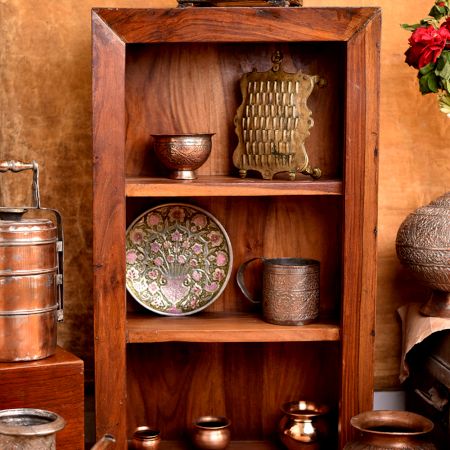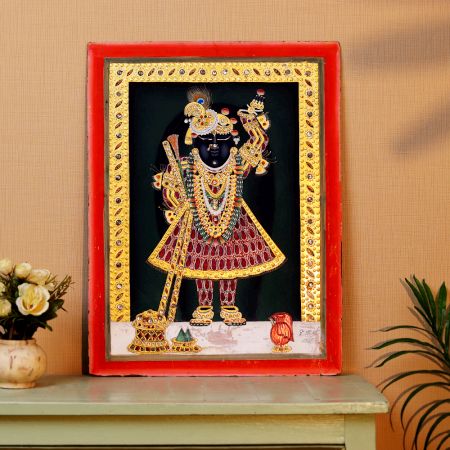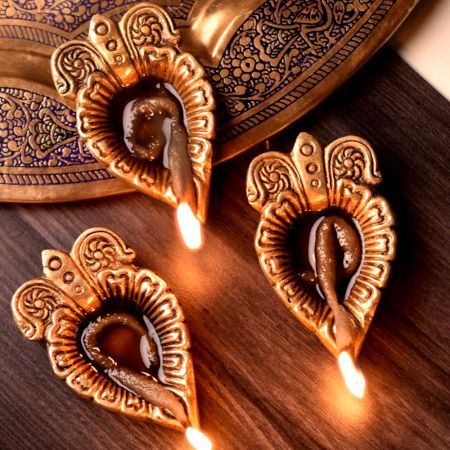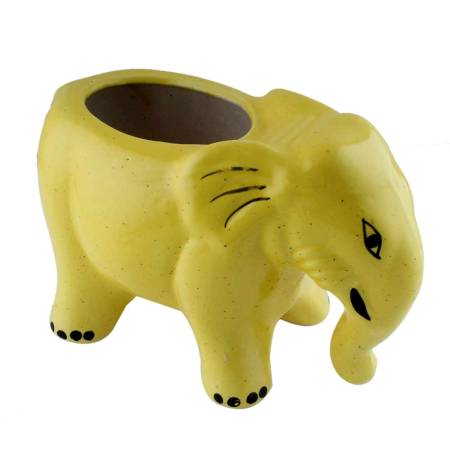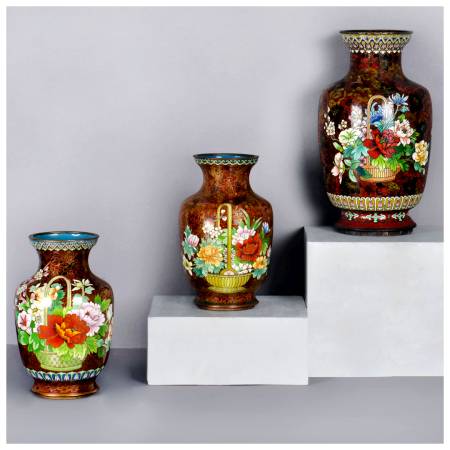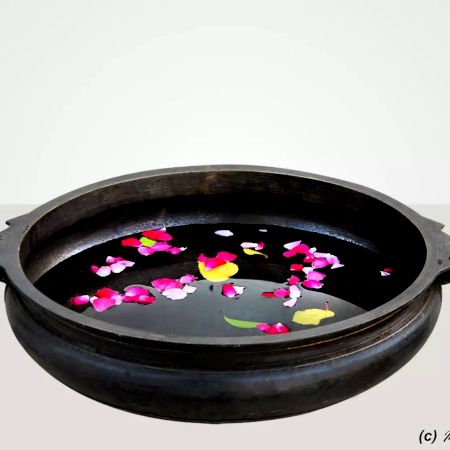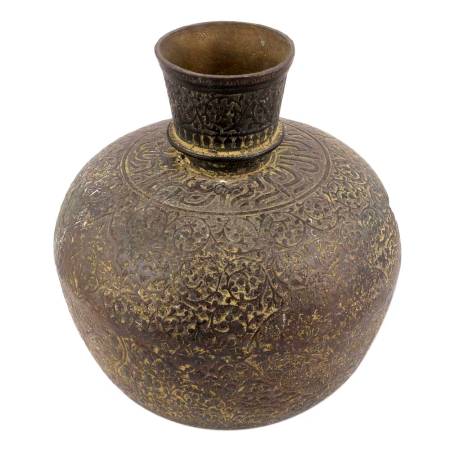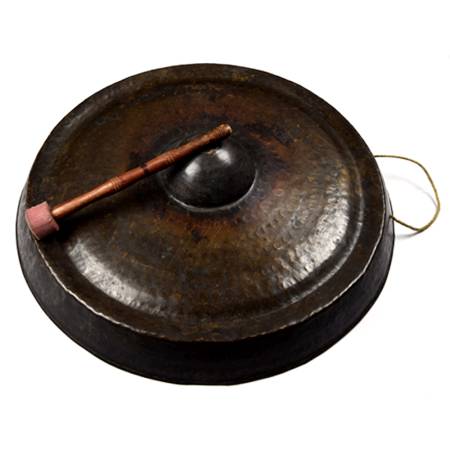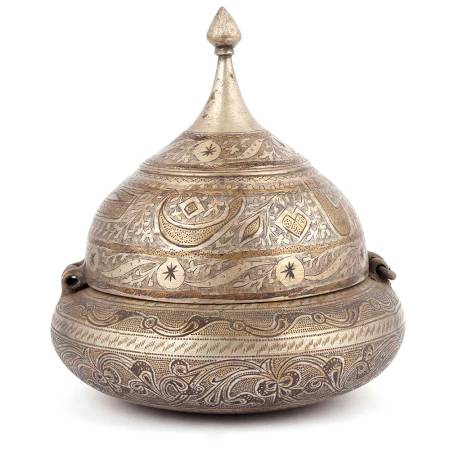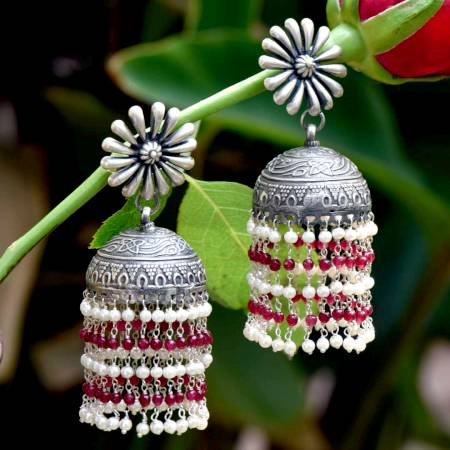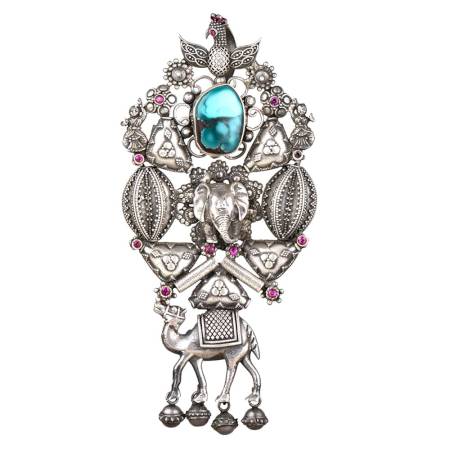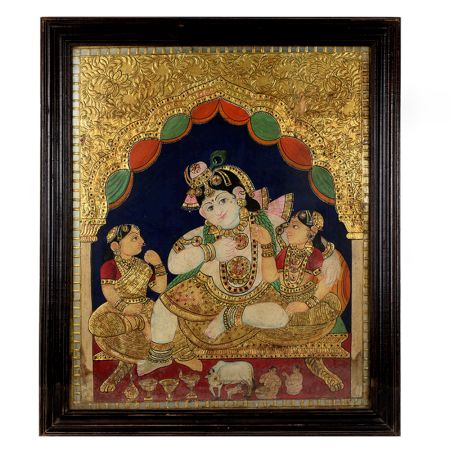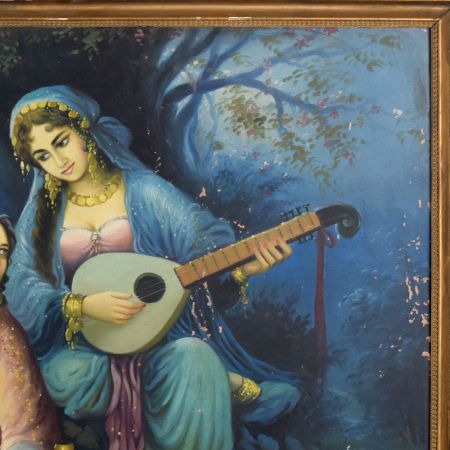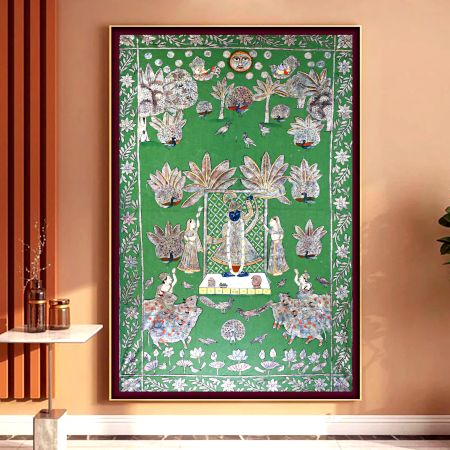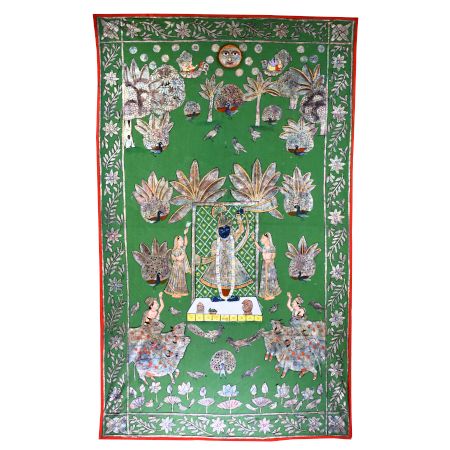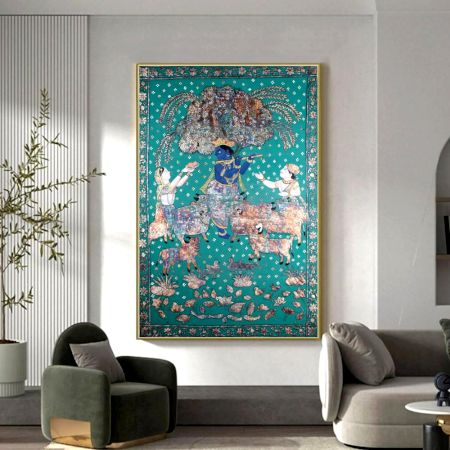-
Traditional Jain Paper Painting with Watercolors Depicting Spiritual Journey
- ₹ 195,000.00
-
Only 1 left
-
Vintage Hardboard Painting of Persian Poet Umar Khayyam with Original Frame
- ₹ 195,000.00
-
Only 1 left
The Art of Wall Paintings: A Guide to Aesthetic and Luxury Decor
A painting is not merely hung—it resides. It anchors a space with memory, identity, and mood. In the absence of narrative clutter, a wall painting converses through color, stroke, silence. It becomes a backdrop and a centerpiece—framing a lifestyle while enriching the walls with expression. A well-selected piece breathes energy into inert corners, transforming spaces from the inside out. It is not about filling voids but about opening visual passageways that tether emotion to architecture. Whether it's the whisper of a watercolour or the confidence of an oil composition, the painting becomes an extension of spatial language. In personal interiors, it often tells unspoken stories of journeys, culture, or inherited taste. In professional settings, it defines tonal intent—focus, calm, authority. A wall painting, when thoughtfully placed, never merely decorates—it defines, elevates, and lingers. It makes presence permanent.
Role in Home Decor: Aesthetics, Sophistication, and Luxury
Interior decor breathes through harmony, and wall paintings are its poetic punctuation. Their placement isn’t accidental; it’s deliberate storytelling. A painting above the mantle whispers refinement, while one beside the dining table invites contemplation. Art doesn’t shout; it shapes. It introduces texture without touch, warmth without words. Sophistication lies in its restraint—in choosing pieces that blend, not boast. A minimalist bedroom with one monochrome abstract feels complete. A heritage drawing room lined with Mughal miniatures sings tradition. Luxury here isn’t in price—it’s in curation, material, intent. Framed artworks with archival glass, hand-painted canvases with raw strokes, or commissioned murals with cultural motifs—all elevate the ordinary into the exquisite. The art doesn’t compete with furniture; it synchronizes. It does not match—it enhances. It brings intellectual depth and emotional resonance. When chosen right, wall paintings become not just embellishments but the visual soul of the home.
Why Are Wall Paintings Considered A Luxury?
Luxury, when viewed through the lens of art, becomes tactile, layered, and timeless. Wall paintings—especially originals—aren’t mass-made objects. They are crafted legacies. An oil painting may carry the weight of months of labor, thoughtful sketching, layers of glaze. The exclusivity lies not only in the technique but also in its irreplicability. Every brushstroke is a decision, every color an emotion. Hand-painted artworks or rare prints are often passed through generations, adding an aura of permanence to impermanence. They whisper of affluence not through brand names but through nuanced taste. Luxury here is silent but persuasive. From fine canvas textures to gold-leaf embellishments in a Tanjore painting, each element adds richness that feels lived-in rather than flaunted. Whether abstract or classical, a luxury painting changes the air of a space. It doesn’t need validation—it commands it. True artistic luxury isn’t trend-bound; it is time-bound and timeless.
Different Types Of Wall Paintings
Wall paintings are versatile storytellers. Each type—be it digital, traditional, abstract, or spiritual—comes with a distinct dialect. Frescoes carry architectural memory. Murals echo cultural grandeur. Watercolors speak softly, almost like memory fragments, while acrylics assert vivid narratives. A traditional Pattachitra brings mythology to life with compact detailing, whereas a digital print reinterprets form for the modern eye. What unites them is their ability to personalize space. A pastel floral might belong in a serene bedroom, while a graffiti-style artwork could energize a home studio. Each painting—regardless of its medium—has an undercurrent of intention. It’s not just about matching with furniture; it’s about mirroring the soul of the room. Even thematic collections—such as botanical, cosmic, or figurative—offer cohesion to eclectic spaces. Paintings are not static—they are mood-setters, era-definers, and sometimes, silent revolutionaries. When chosen wisely, they reimagine a space without rebuilding it.
Modern Art
Modern art isn’t a period—it’s a perspective. It challenges definition and encourages response. Unlike realism or classical forms, modern paintings are shaped more by emotion than representation. Bold colors, fractured geometries, or even unfinished forms dominate the canvas—not as absence, but as intention. These pieces provoke thought and demand attention. They are not decorative pauses but intellectual punctuation. Ideal for contemporary spaces, a modern painting can shift the entire gravity of a room. It invites dialogue, introspection, and often, wonder. Abstracts allow viewers to project their own narrative—what looks like a storm to one, becomes freedom to another. Artists like Rothko, Kandinsky, or even Indian contemporary masters interpret silence as much as form. A modern painting doesn’t replicate nature—it reimagines it. Perfect for minimal, urban, or industrial spaces, modern art distills complexity into raw, poetic fragments that redefine what beauty can mean.
Prints and Lithographs
Prints and lithographs democratize art without diluting its spirit. These reproductions capture the soul of the original while making it accessible to a broader audience. With advancements in archival inks and textured papers, high-end prints now retain the fidelity of brushstrokes and tonal depth. Ideal for modern interiors, prints allow art collectors, aesthetes, and decorators to curate walls that feel personal yet professional. Lithographs, particularly hand-signed or limited editions, still carry a collector's charm. They are structured, clean, and often thematic, making them perfect for curated galleries or corporate interiors. Prints are versatile—they can be bold statements or subtle whispers, depending on their scale and framing. Their affordability allows for experimentation—rotating collections, seasonal swaps, or thematic transitions. In essence, prints aren’t lesser—they are the art of access. They carry elegance with ease, offering decor enthusiasts the ability to frame beauty on their own terms.
Spiritual and Cultural Paintings
Art becomes ritual when it transcends form. Spiritual and cultural paintings do precisely that—they transform homes into sanctuaries. A painting of Buddha isn’t a motif; it’s a mood, a message. Radha-Krishna compositions bring tenderness and devotion. Ganesha art at the entrance is less decor and more invocation. These paintings are symbolic thresholds between the material and the metaphysical. Their colors are chosen with care—lotus pinks for serenity, saffron for purity, indigo for transcendence. They often follow iconographic rules rooted in scriptures or traditions. In Indian homes, such paintings are placed with reverence—aligned with Vastu or spiritual direction. Beyond belief, they create stillness and composure. From Ajanta-inspired murals to Sufi miniatures, these works are repositories of philosophy. They don’t just decorate a wall; they deepen its meaning. A cultural or spiritual painting doesn't merely reside—it radiates. It holds space for silence, prayer, gratitude, and grace.
Thematic Art
Thematic paintings are emotional anchors. They do not merely depict—they narrate. Each theme, whether it be nature’s quiet poetry, the bustling solitude of cityscapes, or surreal expressions of inner landscapes, comes with its own vocabulary. Thematic art reflects identity. A wall filled with travel-inspired paintings speaks of wanderlust. An ocean series might mirror calm or longing. These paintings unify a room by amplifying its essence. In a child’s room, illustrations of forests or planets nurture imagination. In a study, historical or literary themes may stir intellectual depth. The key lies in intentional curation—choosing paintings not just for aesthetic coherence but emotional congruence. A well-placed theme brings alignment between the inner and outer environments. It makes art functional—serving not just visual appetite but thematic resonance. It is where storytelling meets space-making. Thematic art, when executed with intuition, creates not just rooms, but realms.
Traditional Indian Art
Traditional Indian art is not decor—it is living heritage on canvas. These styles—rich in detail, symbolism, and color—carry centuries of craftsmanship and devotion. A Madhubani painting with peacocks and flora brings folk vibrancy. A Tanjore piece with gold leaf glistens in reverence. Pattachitra scrolls narrate mythologies with lyrical intricacy, while Miniature paintings unfold royal histories in jewel tones. Each form is rooted in regional technique, often involving handmade tools, natural dyes, and ancestral guidance. Traditional Indian art elevates spaces by creating a dialogue between the past and the present. It adds weight and wisdom to modern interiors. When placed in contemporary homes, these works form aesthetic bridges—where culture meets architecture. They are meditative, intricate, and deeply expressive. A single piece can evoke festivals, rituals, or timeless stories. Owning one is not just about visual beauty—it’s about cultural stewardship. It celebrates identity with dignified grace.
Bringing Walls to Life: Features and Functions of Wall Paintings
A wall without art is like a thought unspoken. Wall paintings are the visual articulation of a space’s personality. From murals sprawling across staircases to quiet watercolors above reading nooks, each painting brings more than color—it brings life. Features like size, subject, framing, and finish dictate how art integrates into the environment. A vibrant abstract injects energy into lounges. A monochrome series in hallways creates a contemplative flow. But beyond the visual, wall paintings influence atmosphere. They soften acoustics, create rhythm, and balance visual weight. Functionally, they can delineate spaces without partitions or highlight architectural elements. Emotionally, they become points of connection, nostalgia, or daily contemplation. Wall art personalizes—making a hotel room feel like home, or an office feel like vision. It invites stillness or sparks thought. A good wall painting doesn’t merely exist—it speaks, shapes, and sometimes, even shifts the spirit of a room.
Durability, Finish & Texture, and Vastu Shastra
Durability in wall art is not a luxury—it is a necessity. High-quality materials like archival canvas, acid-free paper, or laminated prints ensure longevity. When sealed in UV-resistant frames, art retains its essence for decades. Finish matters too. A glossy finish adds drama, bouncing light and color into the room. Matte finishes offer subtler elegance, especially in earthy or monochrome palettes. Textured finishes—such as impasto or layered oils—give tactile richness, making paintings not just visual but visceral. In Indian homes, Vastu Shastra adds a metaphysical layer. A waterfall painting in the northeast symbolizes abundance. Lotus flowers near the entry channel purity. Avoiding art with themes of sorrow or conflict maintains energetic harmony. When all these dimensions converge—material, finish, texture, direction—they elevate the painting from ornament to ally. It becomes a piece that not only adorns but aligns, not only survives time, but resonates with it.
Usage in Different Spaces
Paintings adapt, a delicate line drawing may belong in a hallway, while a large expressionist canvas commands the living room. In homes, they narrate memory—wedding portraits, spiritual icons, abstract musings of the self. In offices, they inspire focus or communicate brand ethos—minimalist geometrics, motivational prints, or cultural themes. Galleries and museums use art to chronicle civilizations, provoke discourse, or celebrate mastery. In cafés and hotels, art is ambience—it adds story to service. But the brilliance lies in intentional placement. A floral artwork in a spa elevates calm. A bold graffiti in a co-working hub adds zest. Each space demands its own tempo, and art adjusts the rhythm. Even corridors or corners become experiential with the right piece. Paintings don’t need spotlight—they create it. Wherever they reside, they elevate, not impose. Their strength lies in subtlety, making environments meaningful without rearranging walls.
How To Arrange And Design Your House With Wall Paintings
A well-placed wall painting does more than fill empty space, it transforms a house into a home. This guide explores how to choose, position, and balance wall paintings to create a visually harmonious and inviting space.
Selecting the Right Size
Scale is everything. A painting too large can overpower a space, while one too small may go unnoticed, lost in the blankness of the wall. The trick lies in proportion—letting the art breathe while still commanding presence. In expansive living rooms, oversized canvases or triptychs ground the space, drawing the eye and anchoring the room. Smaller rooms, however, thrive on intimacy—choose compact artworks or thoughtfully arranged miniatures that echo the rhythm of the space. When part of a gallery wall, sizes should complement each other, building a visual cadence rather than competition. Size also determines emotional scale—larger works provoke, smaller ones whisper. Measuring the wall, visualizing frames with painter’s tape, or using mock prints helps pre-empt imbalance. A painting’s dimensions should not just fill space but complete it—resonating not only with wall height or width but with the room’s intention and emotional temperature.
Choosing the Right Placement
Placement is quiet choreography. Where a painting resides decides how it’s read. Above a sofa, it becomes a conversational backdrop. In a bedroom, it shapes the mood before sleep and after waking. Positioning should follow lines—aligning with furniture edges, frames, or architectural elements. Centering is not mandatory; sometimes an offbeat placement adds poetic asymmetry. Living rooms welcome bold centerpieces, whereas bedrooms invite gentler subjects—landscapes, abstracts in muted tones, or figurative calm. Dining areas flourish with themes of bounty—still life, cultural feasts, or rhythmic abstracts. Hallways crave verticality and continuity—tall pieces, triptychs, or a sequence of themed frames create movement. Entryways benefit from themes of welcoming or journey—inviting nature, spiritual motifs, or symbolism. Placement isn’t just about aesthetics—it’s about storytelling, energy, and rhythm. A well-placed painting is not decoration—it’s spatial punctuation.
Creating a Gallery Wall
Gallery walls are curated chaos—artfully orchestrated to look spontaneous. They hold memory, mood, and movement in one glance. This isn’t a place for uniformity, but for cadence. Mixing frame sizes, orientations, and even mediums allows the wall to unfold like a visual journal. Black-and-white photographs nestle beside vibrant abstracts. Cultural tapestries converse with modern geometry. The trick lies in anchoring—start with a central piece and build outward, letting the shapes and stories form organic clusters. Maintain a consistent spacing—two inches apart is a common rule—but let instinct guide the layout. Tape paper cutouts of your frames on the wall before hammering nails. Use thematic or color unity to tie diverse pieces together. A gallery wall isn’t built in a day—it’s collected over time. Each frame, each memory, each brushstroke becomes a window. Together, they don’t just decorate—they document.
Balancing with Furniture & Lighting
Paintings don’t float in isolation—they dialogue with furniture, walls, and light. Their voice can either echo the room or challenge it. A neutral-toned room benefits from bold art that commands presence. A richly decorated room finds balance in minimal, quiet pieces. The art should neither clash nor disappear—it should converse. Placement above furniture should follow a visual rule: the artwork’s width should be about two-thirds the width of the furniture below. Distance matters—8–10 inches above furniture is often ideal. Lighting completes the magic. Accent lights or spotlights can highlight texture, pigment, or brushwork, while natural light reveals the art’s true palette. Avoid harsh downlighting that causes glare. Wall washers, track lights, or picture lights make art glow without intrusion. The goal is to create harmony—between form and function, art and space, light and shadow. When done right, the painting not only reflects light, but also presence.
How To Clean And Maintain Wall Paintings
Art, like memory, requires preservation. The dust of time can dull even the most vibrant stroke. Begin with mindfulness—never touch paintings with bare, damp hands. Use a soft microfiber cloth or feather duster to gently lift surface dust. For textured paintings or oil works, avoid aggressive wiping—use soft air blowers if needed. Keep paintings away from direct sunlight unless protected with UV-filtered glass. Sunlight fades, bleaches, and eventually silences pigment. Moisture is art’s silent enemy—avoid hanging valuable works near bathrooms, kitchens, or poorly ventilated corners. Canvas, wood, and paper all react to humidity. If needed, use mild cleaning solutions for sealed surfaces but avoid anything harsh or acidic. Restoration is best left to professionals—never scrape or repaint. Rotate paintings occasionally to avoid uneven fading. Cleanliness is not just about visuals—it’s about respect. A well-maintained painting retains its depth, radiance, and dignity for generations to come.
Where To Buy Wall Paintings
Where art is sourced defines its soul. IndianShelf, with its handpicked curation, is not just a marketplace—it’s a passage through time and taste. Every piece offered reflects thoughtful craftsmanship, rooted in India’s artistic lineage. Whether it's the sacred geometry of Madhubani, the divine luminescence of Tanjore, or the minimalist charm of modern abstracts, IndianShelf balances tradition with contemporary relevance. The collection is not mass-produced—it’s emotionally intelligent. Each artwork is chosen not merely for color but for character. From compact framed prints ideal for apartments to statement-making canvas art for expansive homes, IndianShelf offers versatility without compromise. It is where spiritual serenity meets curated aesthetics. Where luxury is not in price but in precision. Where buying is not transactional, but experiential. For those who seek more than decor—for those who seek story—this is where art finds its walls.


